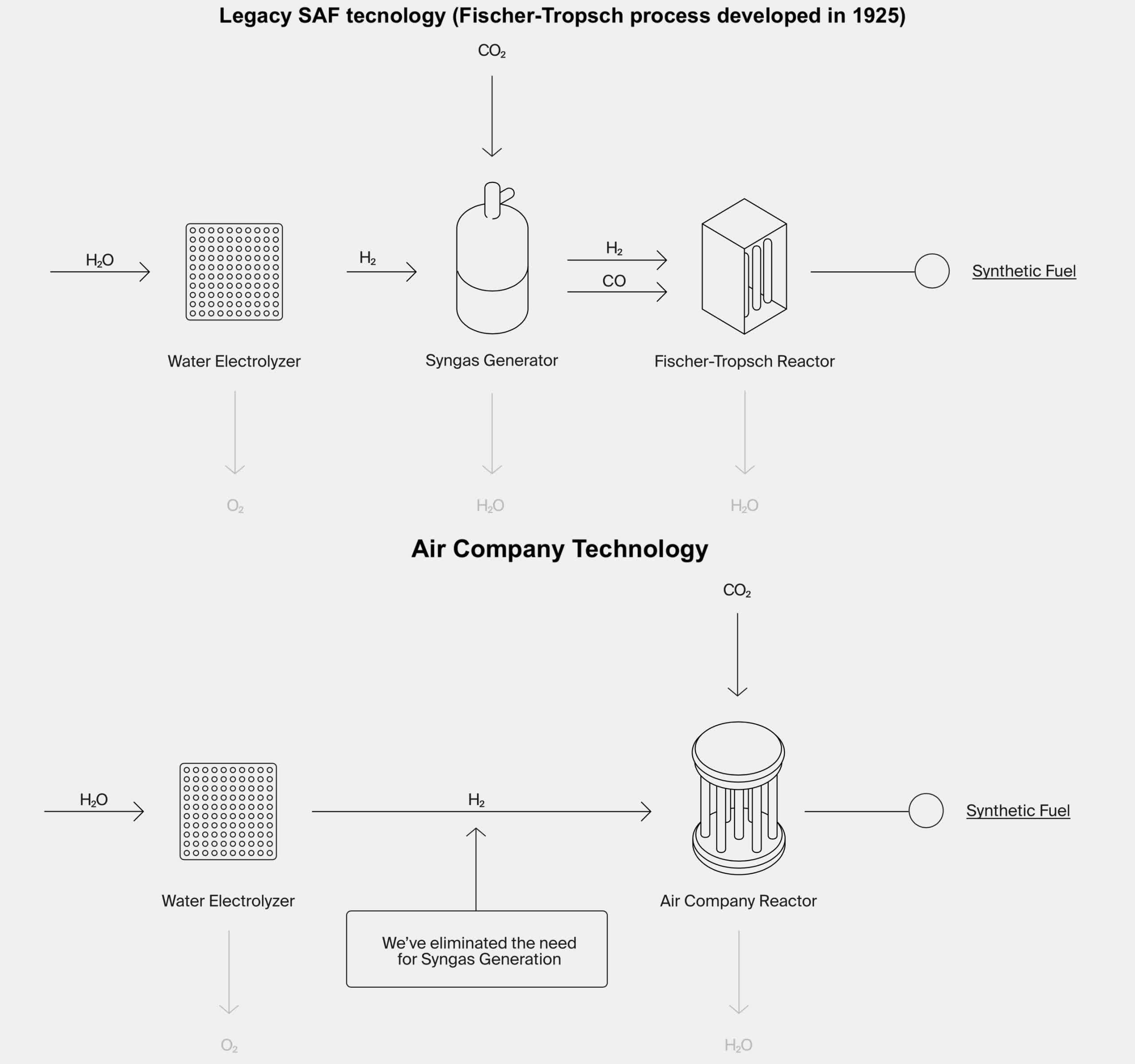In context: As more companies focus on lowering their own carbon emissions, one startup is looking to take CO2 out of the atmosphere and create sustainable aviation fuel. It already has a small-scale working process and says that if it and other manufacturers scale up production, it could "mitigate" at least 10 percent of carbon emissions.
A startup specializing in sustainable aviation fuel (SAF) signed a $65 million contract with the US Department of Defense to create jet fuel out of thin air. The contract will provide a startup called Air Company funds to advance research and development of a system that can extract CO2 from the air and convert it into fuel-grade alcohols and paraffin.
Air Company already has a process of converting CO2 to jet fuel and published a white paper on the procedure. The company claims to have eliminated a step in the nearly 100-year-old Fischer-Tropsch process. It involves creating, harvesting, and storing CO2 from industrial corn fermentation. It then uses water electrolysis to produce hydrogen gas (H2) and oxygen (O2).
The O2 is released into the atmosphere, and the H2 feeds into a reactor with the captured CO2 and a catalyst. The chemical reaction produces ethanol, methanol, water, and paraffin. Distillation separates these components for use in other products, including vodka, perfume, hand sanitizer, and SAF.

The company cannot yet produce at the scale needed to impact global CO2 levels. However, CEO Gregory Constantine says that if Air Company and others can build to scale and all fuel-dependant industries switch to SAF, it could mitigate over 10 percent of carbon emissions.
"These contracts allow [us] to focus on the growth of technology and the development of technology," Constantine told USA Today. "The core of our technology is really centered around carbon utilization."
Unfortunately, the company's lofty goals are still far into the future. While the DoD contract will help Air Company refine its process and build a large-scale production plant, it will take more than one company to produce enough SAF to feed the entire aviation industry.
Another complication is that most regulatory agencies maintain specific limitations on using SAF.

"With current legislation and regulation, there are blend limits that we have to adhere to," said Constantine. "The fuel we create has the components not to be blended. We are hopeful that over the course of the next several years, those blend limits will increase and that regulations will eventually allow the use of 100 percent SAF."
Currently, aviation fuel mixtures can only contain less than 50 percent SAF. However, Air Company partnered with the Air Force to test fly a 100-percent SAF, which proved successful. Dutch airline KLM also trialed a pure SAF with its engine manufacturer, concluding it was safe to burn.
Air Company has already contracted to supply three airlines with SAF --Boom, JetBlue, and Virgin Atlantic. Boom agreed to buy five million gallons annually for an unspecified contract term to fuel it's supersonic Overture jet. JetBlue signed a five-year contract to purchase 25 million gallons, and Virgin promised to pick up 100 million gallons over 10 years.
https://www.techspot.com/news/97766-defense-department-signs-65-million-contract-startup-makes.html